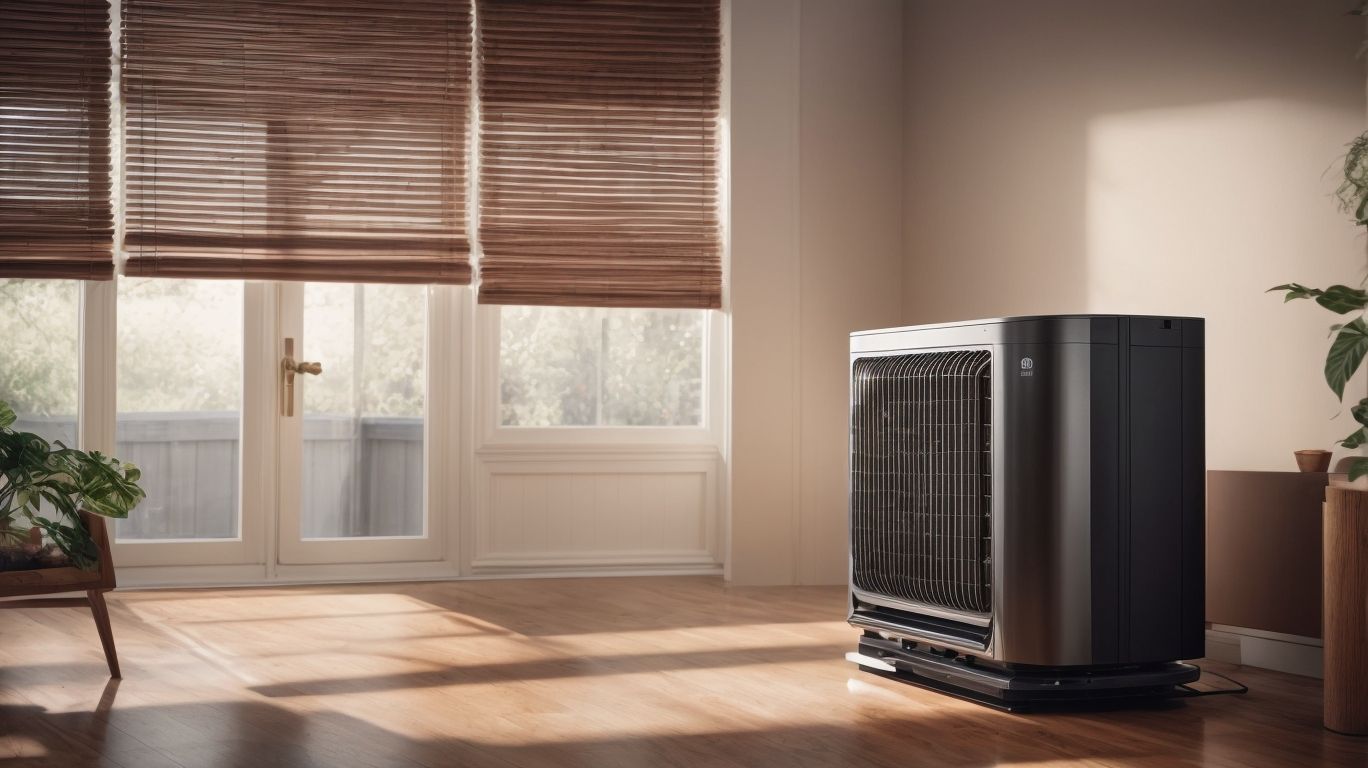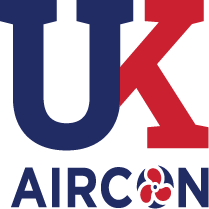Attention all homeowners, are you tired of high energy bills and constant adjustments to your air conditioning unit? If so, then this article is for you. With rising concerns about the environment and the cost of energy, it’s important to find solutions to reduce your energy usage. In this article, we will explore how smart air conditioning solutions can help save you money and be more environmentally friendly.
What are the Benefits of Smart Air Conditioning?
As technology continues to advance, so do the capabilities of our home appliances. One such appliance that has seen significant improvements is air conditioning. With the rise of smart air conditioning systems, we now have more control and convenience over the temperature and energy usage in our homes. In this section, we will discuss the various benefits of utilizing smart air conditioning, including energy savings, improved comfort and convenience, and the ability to remotely control and monitor the system. Let’s dive in and explore how smart air conditioning can help cut energy costs and improve our overall living experience.
1. Energy Savings
Upgrade to Energy-Efficient Equipment: Invest in smart air conditioning systems with high Seasonal Energy Efficiency Ratio (SEER) ratings for substantial energy savings.
Utilise Programmable Thermostats: Set customised temperature schedules to minimise energy consumption during periods of lower occupancy or at night.
Implement Zone Cooling: Employ zoned systems to cool specific areas, reducing energy wastage by not conditioning unused spaces.
Regular Maintenance: Ensure proper upkeep of the air conditioning system, including filter replacement and professional inspections, to sustain energy efficiency.
Did you know? Smart air conditioning systems can save up to 20-30% on cooling costs through optimised energy usage.
2. Improved Comfort and Convenience
Optimal temperature control: Smart air conditioning systems allow users to set and maintain the desired temperature, ensuring improved comfort throughout the day.
Adaptive cooling: These systems can adapt to changing environmental conditions, providing consistent and convenient cooling without manual adjustments.
Convenient scheduling: Users can schedule cooling based on their daily routines, ensuring comfort and convenience while optimizing energy usage.
Integration with smart devices: Smart air conditioning systems can be integrated with smart home platforms, offering remote control and monitoring for enhanced convenience.
3. Remote Control and Monitoring
Install a smart thermostat to control the temperature and schedule remotely.
Utilise a smart air conditioning system with monitoring features to track energy usage and adjust settings for efficiency.
Integrate a smart home system to manage the air conditioning from a centralized platform, offering convenience and ease of monitoring.
Pro-tip: When choosing a smart air conditioning system for remote control and monitoring, ensure compatibility with your existing smart home devices to streamline management and maximise efficiency.
Types of Smart Air Conditioning Systems
As technology continues to advance, so do our options for energy-efficient air conditioning. In this section, we will explore the different types of smart air conditioning systems that can help you cut down on energy costs. From smart thermostats that can learn your preferences and adjust accordingly, to zoned systems that can target specific areas of your home, and even smart vents that can regulate airflow in each room, we’ll discover the unique benefits of each option. Say goodbye to high energy bills and hello to a more comfortable and cost-effective home.
1. Smart Thermostats
Assess Compatibility: Before purchasing a smart thermostat, ensure it’s compatible with your current HVAC system. Check for compatibility with heating, cooling, and ventilation systems, and confirm if it supports your specific system type, such as central heating, heat pumps, or radiant systems.
Features Comparison: Compare the features of different smart thermostats available in the market. Look for aspects like programmability, energy usage reports, geofencing capabilities, voice control compatibility, and integration with smart home systems.
Installation Considerations: Evaluate the installation process. Some smart thermostats require professional installation, while others are designed for user-friendly DIY installation. Assess your comfort level with technology and willingness to perform installation tasks before making a choice.
2. Zoned Systems
Assess your home: Identify areas with varying cooling needs and usage patterns, such as bedrooms used at night and living areas during the day.
Choose the zones: Divide your home into zones based on the assessment. Common zones include sleeping areas, living spaces, and any unused areas.
Select equipment: Pick the appropriate equipment for zoned systems, such as motorized dampers and a control panel that allows independent temperature control for each zone.
Professional installation: Hire a qualified HVAC technician to install the zoned system, ensuring proper zoning layout, damper installation, and thermostat setup.
Programming and testing: Set up the system programming to reflect your usage patterns, then conduct thorough testing to ensure each zone operates as intended.
The concept of zoned heating and cooling systems dates back to the 1930s when engineers developed the first multi-zone systems for commercial buildings, revolutionizing energy efficiency and comfort control.
3. Smart Vents
Assess Your HVAC System: Evaluate your current heating, ventilation, and air conditioning (HVAC) system to determine if it’s compatible with smart vents.
Research Smart Vent Options: Look into various smart vent products available in the market, such as Keen Home Smart Vents or Flair Smart Vents, considering factors like compatibility, features, and user reviews.
Consider Professional Advice: Consult HVAC professionals to get insights into the suitability of smart vents for your home and how they can optimise your HVAC system.
Plan Installation Locations: Strategically plan the placement of smart vents in different rooms to ensure efficient airflow and temperature control throughout your home.
Installation and Integration: Decide whether to opt for professional installation or DIY and ensure seamless integration of smart vents with your existing HVAC system.
How to Choose the Right Smart Air Conditioning Solution for Your Home
With the rising costs of energy, more and more homeowners are turning to smart air conditioning solutions to cut their expenses. But with so many options on the market, how do you choose the right one for your home? In this section, we will discuss the key factors to consider when selecting a smart air conditioning solution. From assessing your energy usage to checking compatibility with your current system, and comparing features and prices, we’ve got you covered. Keep reading to find the perfect smart AC solution for your home.
1. Consider Your Energy Usage and Needs
Assess Your Energy Usage:
Calculate your average energy consumption considering factors like the size of your home, the number of occupants, and typical appliance usage.
Evaluate Your Needs:
Determine the specific requirements for cooling in different areas of your home, considering factors like room occupancy, sunlight exposure, and usage patterns.
Analyse Your Current System:
Understand the inefficiencies of your existing air conditioning system and identify areas for improvement to cater to your energy needs effectively.
When considering your energy usage and needs, it’s essential to strike a balance between comfort and efficiency. By conducting a thorough assessment and understanding your unique requirements, you can make informed decisions to optimise your smart air conditioning solution for maximum energy savings and comfort.
2. Check Compatibility with Your Current System
Check the type of HVAC system:
Identify if your current heating, ventilation, and air conditioning (HVAC) system is compatible with the smart air conditioning solution. Ensure compatibility with central air systems, ductless mini-split systems, or window AC units.
Assess wiring and connectivity:
Verify if your current system has the necessary wiring and connectivity to support smart features like Wi-Fi connectivity, app control, or integration with smart home platforms.
Consider smart thermostat compatibility:
If opting for a smart thermostat, check if it is compatible with your current HVAC system. Some systems may require additional accessories or professional installation for compatibility.
Evaluate communication protocols:
Understand the communication protocols used by your current system and ensure that the smart air conditioning solution supports these protocols for seamless integration.
3. Compare Features and Prices
Compare features and prices of different smart air conditioning systems to find the best fit for your home. Research various brands and models to understand the specific features they offer, such as energy-saving modes, compatibility with smart home systems, and user-friendly interfaces. Consider the long-term benefits of each system in relation to its price, ensuring that the features align with your energy-saving and comfort needs.
Once, I was looking for a smart air conditioning system and compared the features and prices of different models. After thorough research, I found a system that perfectly matched my requirements and budget, leading to significant energy savings and enhanced comfort in my home.
Installation and Maintenance of Smart Air Conditioning Systems
One of the most effective ways to reduce energy costs and increase efficiency in your home is through the use of smart air conditioning systems. However, proper installation and maintenance are crucial for ensuring optimal performance and longevity of these systems. In this section, we will discuss the pros and cons of professional installation versus DIY methods, as well as the importance of regular maintenance and upkeep for your smart air conditioning system. By the end, you’ll have a better understanding of how to get the most out of your smart AC and save on energy costs.
1. Professional Installation vs. DIY
Assess your technical skills and experience to determine if you can handle the installation process.
Evaluate the complexity of the smart air conditioning system you intend to install, considering the wiring, configuration, and compatibility.
Research local building codes and regulations to ensure compliance with professional standards and safety measures.
Consider the warranty and insurance implications of DIY installation versus professional services to mitigate potential risks and liabilities.
Calculate the overall cost of DIY installation, factoring in the purchase of tools and equipment, against the cost of professional installation.
In the early 20th century, the concept of DIY gained popularity with the rise of retail hardware stores and the availability of DIY manuals, empowering individuals to take on home improvement projects independently.
2. Regular Maintenance and Upkeep
Inspect and clean the air filters regularly to ensure optimal airflow and system efficiency. Check and clean the evaporator and condenser coils to prevent dust and debris buildup, which can hinder cooling performance. Examine the thermostat to verify accurate temperature readings and make necessary calibrations. Inspect and clear the condensate drain line to prevent clogging and potential water damage. Test the system controls and sensors to ensure proper functioning and make any required adjustments. Consider scheduling professional maintenance at least once a year to address any complex issues and maintain peak performance.

